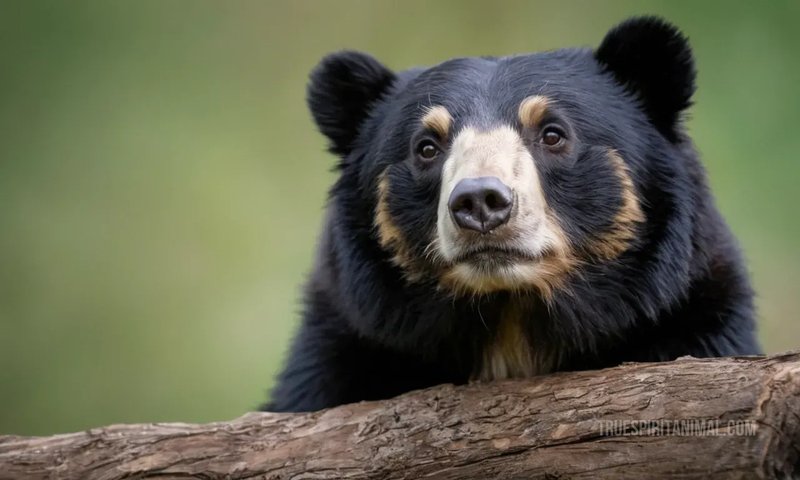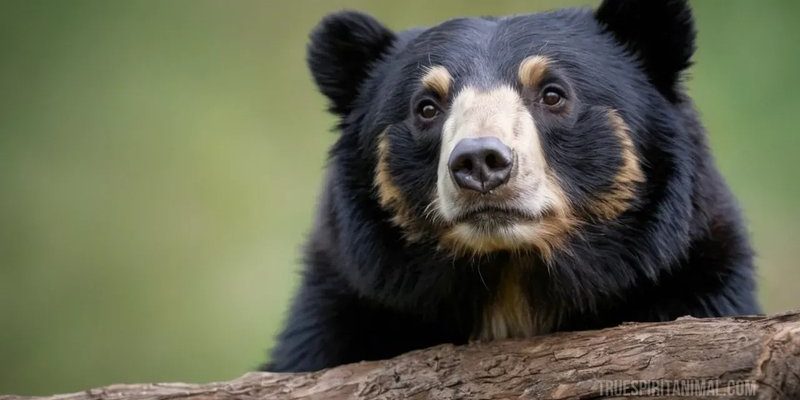
The spectacle of this bear doesn’t stop at its physical attributes; it extends deeply into cultural representations and folklore across the regions it inhabits. Imagine sipping coffee and discussing how animals frequently symbolize different human traits or values in various cultures. The spectacled bear is no exception. It’s woven into stories, traditions, and even myths that reflect the lives and beliefs of the people who share its habitat.
In this article, we’ll explore how the spectacled bear has made its mark on culture and folklore, revealing the rich tapestry of stories and meanings associated with this remarkable animal.
1. The Spectacled Bear in Andean Folktales
Spectacled bears hold a significant place in the folklore of Andean communities, especially in countries like Peru and Ecuador. These bears are often seen as guardians of the mountains. You might come across tales where a spectacled bear helps lost travelers find their way home, embodying wisdom and protection.
Many of these stories reflect the relationship between the bear and its environment. In some versions, the bear is portrayed as a spirit that maintains balance in nature. When the bear is respected, the mountains prosper. But if exploited or feared, disaster can strike—like landslides or droughts. This relationship highlights how the bears are essential not just as a species, but as cultural figures that remind communities of their responsibility towards nature.
In essence, the stories convey a lesson: treating the earth and its creatures with respect fosters harmony. So, when you hear an Andean tale about the spectacled bear, you’re not just hearing an entertaining story; you’re absorbing a moral lesson about coexistence.
2. Symbolism in Art and Literature
The imagery of the spectacled bear often finds its way into art and literature, serving as a powerful symbol of the wild and untamed beauty of the Andes. Artists frequently depict these bears in colorful murals and paintings, celebrating their unique appearance and the rich biodiversity of their habitat.
In literature, especially children’s stories, the spectacled bear is sometimes characterized as friendly and wise, teaching young readers about kindness and environmental stewardship. For instance, one popular children’s book features a spectacled bear who embarks on adventures, solving problems and helping other animals along the way. These narratives shape perceptions of the bear, fostering a sense of empathy and wonder among young readers.
Moreover, this animal often appears as a metaphor for resilience and adaptability. Just as the bear thrives in the rugged Andean landscape, the stories encourage individuals to embrace their environment and adapt to challenges. This duality of physical presence and symbolic meaning makes the spectacled bear a rich subject for cultural exploration.
3. The Spectacled Bear in Rituals and Celebrations
In some Andean cultures, the spectacled bear features prominently in rituals and celebrations. For instance, during harvest festivals or agricultural rites, community members might honor the bear as a way of expressing gratitude for nature’s bounty.
Rituals may include dances or songs that celebrate the bear’s connection to nature. These acts reflect a deep reverence for wildlife and the planet. Participants might wear costumes inspired by the bear, blending their identities with this magnificent creature, reinforcing the bond between humans and animals.
You might be wondering how these rituals impact conservation efforts. They often serve as a reminder of the cultural importance of species like the spectacled bear, encouraging community members to engage in conservation practices. By celebrating the bear, communities highlight their commitment to protecting their natural heritage.
4. Modern Interpretations and Conservation Efforts
In today’s world, the spectacled bear is also recognized in modern interpretations of folklore, especially when it comes to conservation. Organizations working to protect this species often use traditional stories as a basis to foster awareness about the bear’s plight.
These stories resonate deeply, as they are familiar to local communities. Incorporating folklore into educational programs helps to bridge the gap between science and cultural understanding. When locals hear about the bear’s role as a protector in their legends, they might feel more inclined to engage in conservation efforts.
Moreover, the bear has become a symbol of biodiversity and environmental protection. By sharing stories about the bear’s role in the ecosystem, conservationists encourage communities to protect its habitat. This modern interpretation keeps the bear alive in cultural conversations, ensuring it remains relevant in today’s society.
5. Spectacled Bear Merchandise and Media
Another interesting aspect of the spectacled bear’s cultural representation is its presence in merchandise and media. You can find everything from plush toys to clothing featuring this charming bear, symbolizing a blend of affection and awareness.
Merchandise often ties back to wildlife organizations, with proceeds going towards conservation efforts. This not only creates a direct link between fans and the cause but also spreads awareness about the species. Imagine a child cuddling a plush spectacled bear and asking questions about its habitat; that’s where awareness begins!
On social media, you’ll see stunning photographs and videos showcasing these bears, helping to captivate a global audience. Wildlife photographers and advocates share their encounters, celebrating the beauty of these animals while prompting discussions about their conservation. As more people engage with the stories and images of the spectacled bear, the cultural connection continues to grow.
6. The Spectacled Bear as a Cultural Bridge
Ultimately, the spectacled bear serves as a cultural bridge between people and nature. Its representation in folklore, art, and modern media allows for conversations about the importance of biodiversity and environmental stewardship.
The stories surrounding this bear help transcend cultural boundaries, uniting people who share a appreciation for wildlife and the environment. By exploring these narratives, we foster a deeper understanding and respect for the ecosystems that support all life.
As you engage with tales of the spectacled bear, it’s not just about folklore; it’s about recognizing how intertwined our lives are with nature. The bear reminds us that every creature has a role in maintaining the balance of life—even if it’s just through a story shared over coffee.
The spectacled bear may not be the most famous bear species, but its cultural significance is profound. From Andean folklore to modern conservation efforts, this bear has a unique place in the hearts and minds of many. Through stories, art, and rituals, it embodies essential values of respect, adaptability, and the importance of coexistence with nature.
So, next time you hear about the spectacled bear, remember that it’s not just a cute animal; it’s a powerful symbol steeped in culture and meaning. Let’s cherish these stories and continue to promote the conservation of such an incredible species for generations to come.

